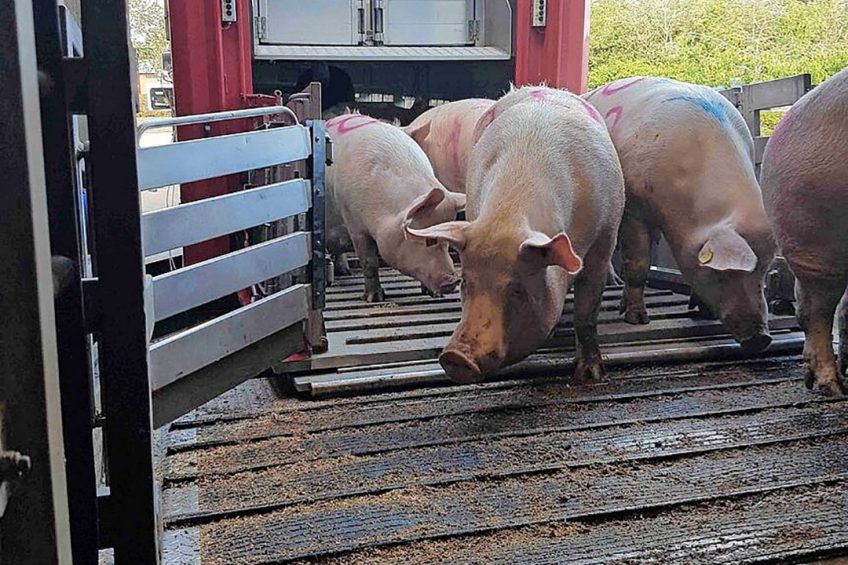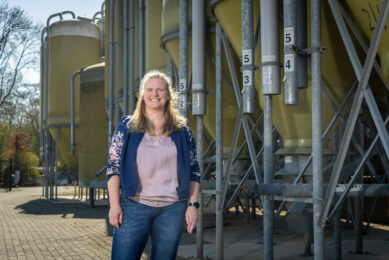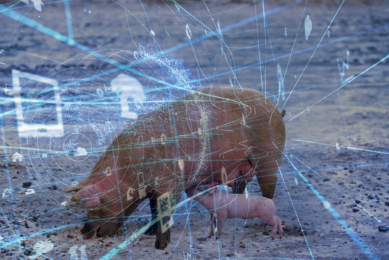3 ways to improve sow handling at slaughterhouses

A recent Danish study has led to 3 slaughterhouse adjustments to improve welfare conditions for cull sows and make the entire process more logical and better organised.
Veterinary surgeon Sanne Weinreich Christensen carried out the study while pursuing her master’s degree at Aarhus University’s Department of Animal Science. The findings were recently published in the open access journal Applied Animal Behaviour Science.
Christensen works at the headquarters of meatpacker Danish Crown in Randers. She is responsible for animal welfare at the company’s slaughterhouses. In relation to her thesis, she wanted to examine how sows are handled when they arrive at the slaughterhouse and are moved from the truck to the lairage pens – and how challenges along the way may affect animal behaviour.
Improving conditions of sows at the slaughterhouse
In a news article at the website of Aarhus University, Christensen said, “As a result of my research, it was possible – with a few changes – to improve the conditions when the sows arrive at the slaughterhouse. Having implemented the changes, I visited the company and the personnel told me that the changes had a very positive impact – for the animals as well as the personnel handling the sows. Moving the sows has become so much easier.”
 Solid fencing in the ramp
Solid fencing in the ramp
The changes have been implemented in the meatpacker’s slaughterhouse in Skærbæk, where over 5,000 cull sows per week are handled, about half the country’s weekly amount. The new features begin at the 12 m ramp on which the driver moves the sows from the truck towards the entrance of the slaughterhouse and into the lairage pens.
The ramp used to have side protections with open barriers, meaning that the sows were able to see other animals. When walking towards the pens, this would often create blocking and agitation when the sows noticed new animals. The barriers have now been replaced by solid fencing, only allowing the sows to see animals from their own truck load.
 The road ahead is visible
The road ahead is visible
Walking the aisle towards the lairage pens, the sows had to pass a 90 degree corner, and they were unable to see what was waiting behind the corner. This would often lead to blocking and signs of fear, increasing the risk of sows turning around and walking back towards to the truck. Now, the corner has been altered and adjusted, allowing the sows to look ahead.
 An aisle for the slaughterhouse staff
An aisle for the slaughterhouse staff
One final change is for to the slaughterhouse personnel. Once a handler has walked a load of sows along the aisle towards the lairage pens, his/her only way back to the truck is via the sows heading for the pens, but in the opposite direction. That could disturb the sows and reduce the ease of movement. Now, the slaughterhouse has constructed a platform/gangway allowing handlers to walk back without disturbing the ease of movement.

Slaughterhouse staff are positive
Christensen explained that both personnel and drivers at Skærbæk slaughterhouse consider the changes to be very positive. They do not have to guide the sows as strictly as before and arrival at the slaughterhouse is easier for both animals and personnel.
Christensen said, “The management and personnel at slaughterhouses are generally highly interested in implementing better solutions. It is a prerequisite that the personnel knows why the sows behave the way they do. My research has contributed to this, which is very positive.”
She further added that the construction of new lairage facilities at the Danish Crown slaughterhouse in Blans will implement her research as well. Those facilities are built with due consideration to animal welfare, when pigs are walked from the truck via the aisle to the lairage pens.
The study in Applied Animal Behaviour Science was authored by Sanne W. Christensen, Mette S. Herskin and Tine Rousing, all attached to Aarhus University, Denmark.











